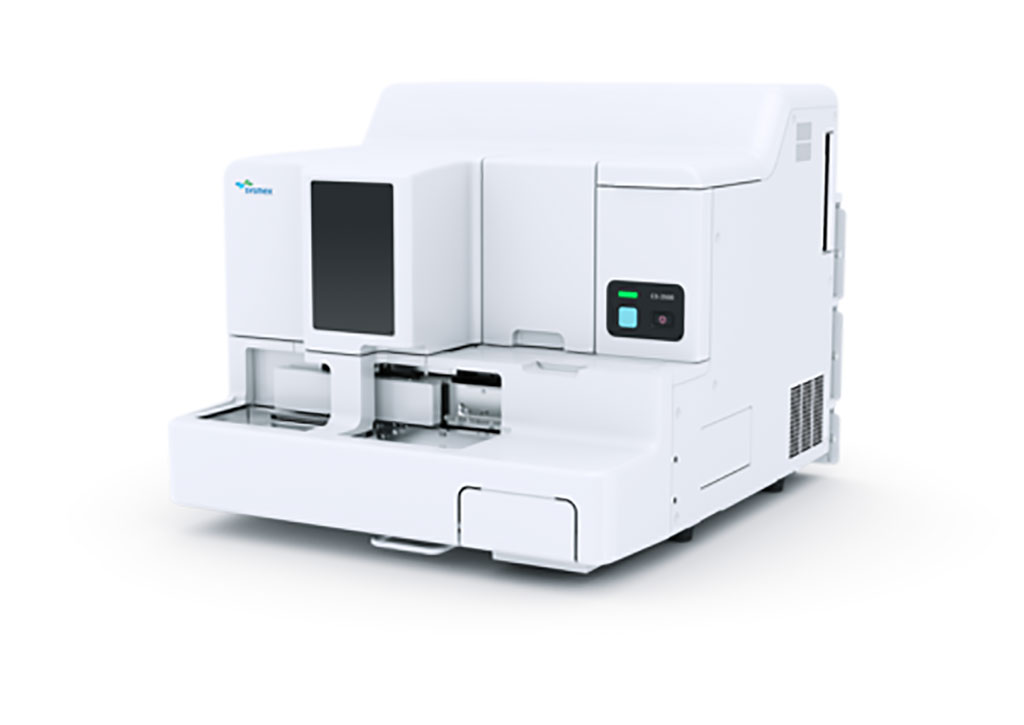Microvascular/Endothelial Dysfunction Contributes to Post-COVID Syndrome Pathogenesis
Posted on 17 May 2022
Post-COVID syndrome (PCS) or Long-COVID is an increasingly recognized complication of acute SARS-CoV-2 infection, characterized by persistent fatigue, reduced exercise tolerance chest pain, shortness of breath and cognitive slowing.
Acute COVID-19 is strongly linked with increased risk of thrombosis; a prothrombotic state, quantified by elevated Von Willebrand Factor (VWF) Antigen (Ag):ADAMTS13 ratio, and is associated with severity of acute COVID-19 infection. Acute SARS-CoV-2 infection generates a hypercoagulable state, particularly evident in hospitalized patients.

Hematologist at the University College London Hospitals NHS Foundation Trust (London, UK) and their colleagues assessed 330 patients in an outpatient post-COVID clinic between July 2020 and May 2021. Referral to the post COVID clinic included both patients post hospitalization and referrals from community non-hospitalized cases. The median age of the cohort was 46 years (range 18-88 years). Patients followed up in the clinic varied from 3 to 15 months post proven or presumed COVID-19 infection. The majority (97%) of the patients had symptoms greater than three months following acute COVID-19 infection, of which respiratory symptoms and fatigue were the most common symptoms.
ADAMTS13 activity was measured using FRETS VWF73 assay. Von Willebrand screen (VWF antigen and VWF activity) was measured using standard automated immunoturbimetric assay in a Sysmex CS-2500 analyzer (Sysmex UK, Milton Keynes, UK) with a Siemens kit (VWF:Ag and INNOVANCE VWF activity (Siemens Healthcare Diagnostics, Marburg, Germany), and a clotting based assay using Factor VIII (FVIII) deficient plasma and Dade Actin FS Activated PTT reagent was used to measure FVIII. All analysis was performed on plasma derived from peripheral blood samples collected in sodium citrate tubes, as part of routine assessment in the post COVID clinic which included D-dimer.
The investigators reported that overall, 85 (26%) patients had high factor VIII ranging from 2.1 to 5.1 IU/mL, while 60 (18%) patients had high VWF(Ag) ranging from 1.7-3.3 IU/mL. ADAMTS13 activity ranged from 68.2 to 159.3 IU/dL. The median VWF(Ag):ADAMTS13 ratio was 1.2 (interquartile range [IQR] 0.9-1.5) across the cohort, with an elevated VWF(Ag):ADAMTS13 ratio (≥ 1.5) being observed in 92 patients (28%) across the cohort. Community-managed (83%) and hospitalized patients (16%) had a comparable median VWF(Ag):ADAMTS13 ratio of 1.2. Meanwhile, D-dimer was elevated (>550 µg/L FEU) in 42 (13%) patients.
The authors concluded that their findings suggest an ongoing prothrombotic state in PCS, demonstrated by measurable laboratory and clinical parameters, therefore adding confirmation to the hypothesis of microvascular/endothelial dysfunction in the pathogenesis of PCS. They hypothesized the persistence of a hypercoagulable state which may be associated with endothelial dysfunction and microthrombi in the capillary bed of large muscles, causing a reduction in oxygen capacity during exercise, resulting in anaerobic respiration and fatigue. The study was published on May 11, 2022 in the journal Blood Advances.
Related Links:
University College London Hospitals NHS Foundation Trust
Sysmex UK
Siemens Healthcare Diagnostics













